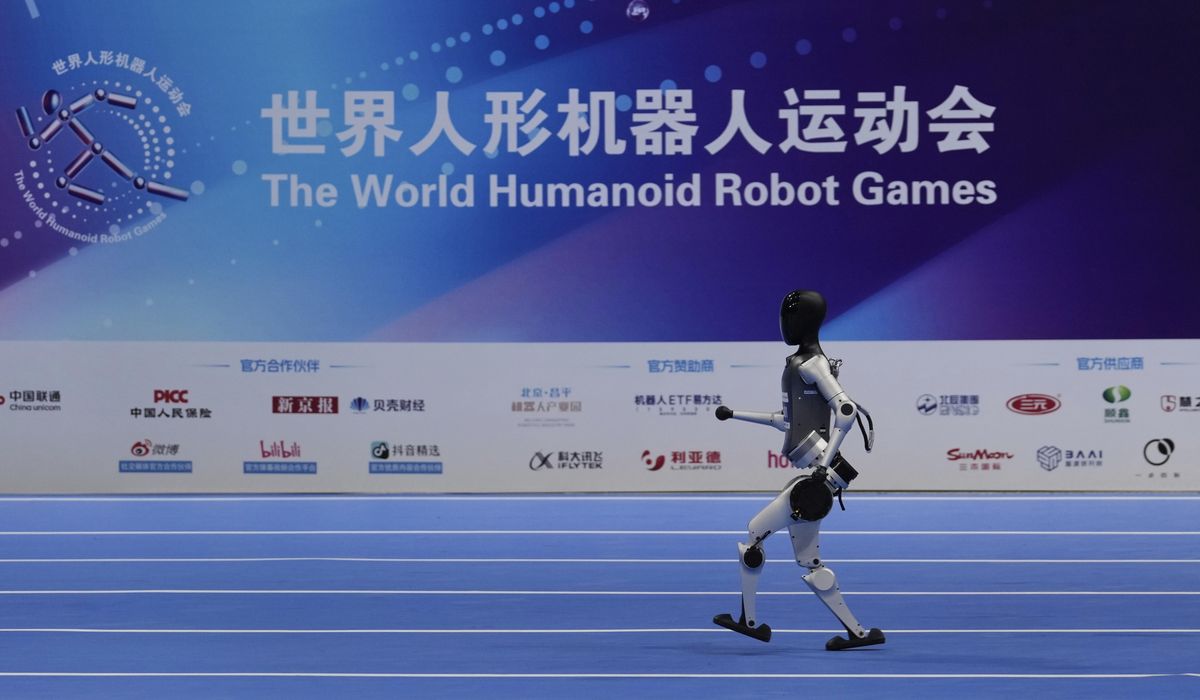


Beijing is rapidly upscaling its robotics development strategy in an attempt to dominate the nascent market, according to a new report.
A report published this month by The Jamestown Foundation details China’s decadelong effort to dominate the field of intelligent robotics using a “whole-of-nation” approach, which involves independent industry actors, academic institutions and government institutions coordinating their activities to achieve Beijing’s goals. This includes massive state subsidies for robotics startups and strict government guidelines for developers.
Beijing tagged robotics as an emerging industry to focus on as early as 2015 in the Chinese government’s Made in China 2025 policy report, according to the report from The Jamestown Foundation, a nonpartisan nonprofit that provides global research and analysis.
The Made in China 2025 policy report indicated structural weaknesses that were holding China back in the robotics industry, including heavy reliance on foreign-made parts such as servo motors. The policy report advocated for improved domestic sourcing to reduce supply chain bottlenecks.
Following the release of its Made in China 2025 policy, Beijing has intensified its focus on humanoid and industrial robotics, The Jamestown Foundation report notes. China’s 14th Five-Year Robotics Industry Plan, launched in 2021, aims to establish the country as a global leader in robotics by the close of 2025.
Beijing’s Robotics+ plan in 2023 further integrated robotics development into the Chinese economy, according to The Jamestown Foundation report. The plan promoted the widespread use of robotics in various industries, including education, health care and logistics.
Many of China’s most productive provinces are in lock-step with Beijing’s humanoid robotics goals. According to The Jamestown Foundation, manufacturing powerhouse provinces like Zhejiang quickly adopted a focus on humanoid robotics in the last decade, publishing blueprints and policy papers. Smaller provinces such as Anhui, Guangdong, Jiangsu and Hebei quickly followed suit with their own blueprints, reflecting national alignment on robotics in China.
China has heavily invested in humanoid robot development, but the technology is still in its early stages and expensive to deploy. Nevertheless, Beijing’s focus on robotics over the past decade has enabled China to deploy industrial, or non-humanoid, robots at a faster rate than any other nation.
According to the International Federation of Robotics, China has deployed more industrial robots than any other country in the world. As of 2023, China has deployed more than 276,000 robots across various industries. Japan stands in second place with 46,000 deployed robots, while the U.S. has reportedly deployed 37,600.
China’s long-term focus on humanoid robotics comes as Western firms push the envelope. In particular, Tesla’s humanoid robot project Optimus has captured headlines as the company works to pivot from electric vehicles to artificial intelligence and robotics. Tesla CEO Elon Musk has said the Optimus robots will be designed to take over dangerous industrial work and will be deployed by the end of 2025.
Chinese research firms still trail behind well-established Japanese and Korean companies in the intellectual property sphere. The Jamestown Foundation report indicates that, as of 2023, Chinese firm UBTECH is leading in total valid patents with 763, but the company trails behind other players like Honda, Samsung, Toyota and Kawasaki. Collectively, the top Japanese and Korean firms following UBTECH account for 1,777 humanoid robotics patents.
The gap is closing, with Japan and Korea accounting for 7,337 total humanoid robotics patent applications between 2015 and 2022, compared to China’s 6,618. The Jamestown Foundation report maintains that the sheer number of patents, combined with Beijing’s comprehensive industrial policy regarding robotics, illustrates China’s desire to dictate the industry’s destiny.
“As of 2025, the [People’s Republic of China] accounts for nearly 60 percent of global AI-driven robotics patent filings, signaling not only dominance in output, but also growing influence over the future trajectory of embodied AI,” the report reads.
• Vaughn Cockayne can be reached at vcockayne@washingtontimes.com.
